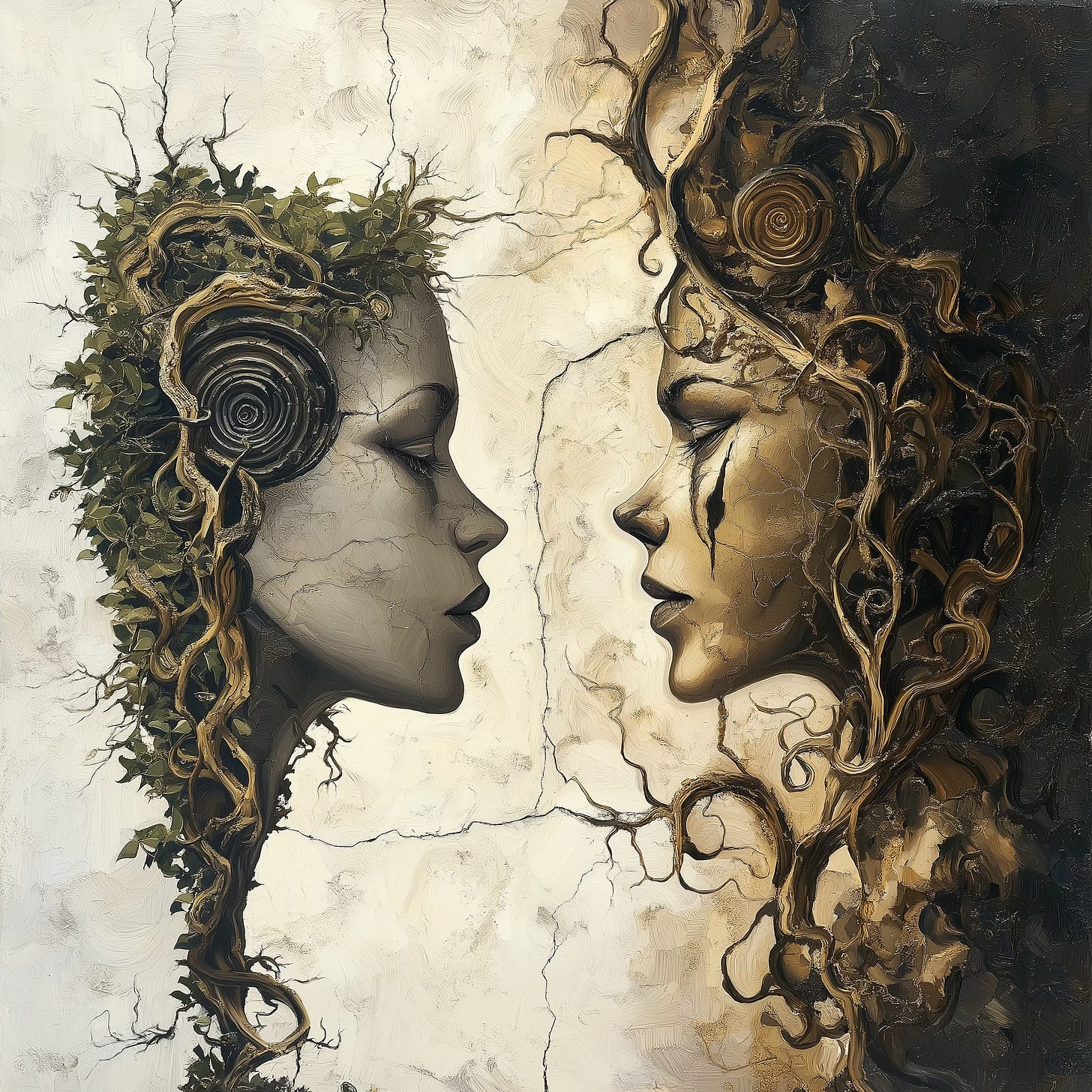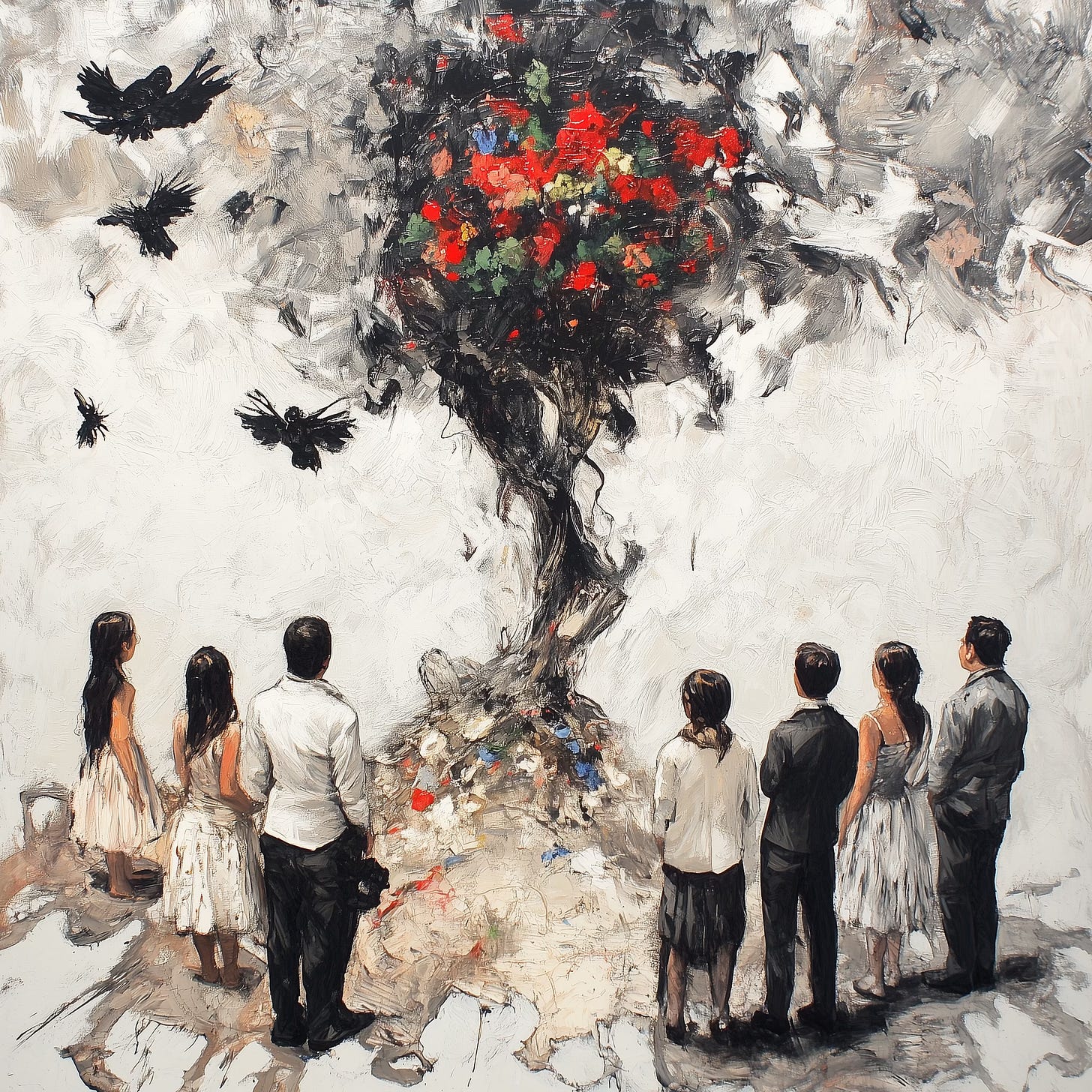When Art Becomes Experience
How Creation Frees the Soul and Grows Beyond the Artist
Where the Seed of Creation Takes Root
Long before a poem finds the page or a sculpture touches marble, there’s a subtle stirring in the soul. Something wants to be born—an experience, a feeling, an echo that calls from within. This is the seed that yearns for expression, so often overlooked in the frantic rush of our daily tasks. Yet it is there, quietly persistent, like a small green shoot pushing up through cracks in the sidewalk. We can try to ignore it, second-guess it, or stuff it in a drawer. Still, the seed keeps stirring, reminding us that each human heart holds an untold story.
In last week’s post, David Whyte suggested that the true alchemy of poetry isn’t merely describing or interpreting a moment, but rather living it. “Usually in a room, if you try and talk about very precious experiences, the more you talk about them, the further they go away. But with poetry, which is actually not about a subject, not about a quality or an experience, but is the experience itself, you can actually create that experience in the room”. From that one seed—be it verse, song lyric, painting, or journal entry—our creative offerings become living, breathing extensions of our soul. They step outside of us, almost with a life of their own, to be witnessed and interpreted by others. That is the humbling part: no matter how we intend our art, it leaves our private universe and enters the unpredictable realm of shared perception.
The Growing Vines of Shared Meaning
Art, like every seed, is destined to grow beyond the place it first took root. A writer can spend hours agonizing over a metaphor, only to have the reader reshape its meaning entirely. A painter can craft a color palette intended to show heartbreak, while someone else sees resilience and hope. And there is both sadness and a beautiful kind of liberation in that. We cannot control how our expressions are interpreted. We cannot be fully understood; indeed, one might argue no two people ever completely understand each other.
Yet this divergence of understanding is part of what makes creation so transformative. In letting our work go, we step into a shared human experience. We find ourselves offering something precious—our recollection of a moment, our crystallized emotion—and trusting it will land in ways unforeseen. The seed has sprouted vines that climb and wander. Its tendrils touch new hearts, spark new ideas, and perhaps most unexpectedly, free us from carrying the entirety of that memory alone.
Harvesting the Freedom of Expression
In the spirit of Tony Robbins’ remark that “A life worth living is worth recording,” art is not limited to those who identify as artists. Journaling your thoughts, penning a farewell letter to an old fear, humming a tune you invented in the shower—these small seeds of creation keep the essence of who we are from slipping through the cracks of time. As we record, we lighten the burden of recall while simultaneously granting life to our experiences in a more memorable form.
By giving shape to a secret sorrow or releasing a triumphant laugh onto the page, we place it outside ourselves, to breathe under the light of day. That act alone can be liberating. The memory does not vanish; rather, it grows into something distinct, a humble fruit that others can taste and perhaps be nourished by. So let each seed fall onto the fertile ground of your imagination. Let it fracture through the shell of your limitations and germinate into words, sketches, or ideas. And when the art—whatever form it takes—finally stands on its own, delight in the fact that you have shared more of your soul than you might ever have dared to speak aloud. We all have a forest of stories within us, and each recording, each verse, each brushstroke is a seed. Plant them, nurture them, then watch how they bloom in the hearts of others.
Don’t be afraid to share what you create, because you are already seen, already felt, already leaving traces of yourself in every passing glance and fleeting interaction. The real question is—will you choose to shape what you leave behind?






